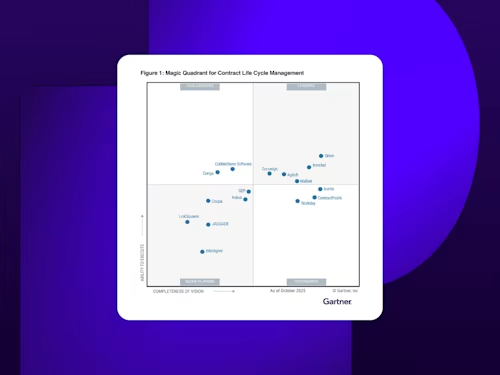
6 Financial Services Trends to Watch in 2024
In this blog series, we dive into specific trends shaping the banking, insurance and wealth industries in 2024 and beyond.

Shaped by persistent inflation, stock market volatility, high interest rates and geopolitical tensions, 2023 was a dynamic and volatile year for financial services organizations.
For insurers, the effects of climate change are driving up property reinsurance rates, spurring firms to retreat from key markets. In banking and lending, the early 2023 collapse of regional banking institutions, rising interest rates and tightening household budgets initiated an outflow of funds to non-traditional institutions, making deposit growth the number one priority for the sector in 2024. For asset and wealth management firms, market volatility led to revenue declines in 2023.
With many of these challenges likely to persist through 2024, financial services and insurance companies are dialed in on lowering costs and accelerating revenue, while improving the customer experience and tightening their security and compliance processes. To meet these objectives, firms should continue to strategically invest in technology that will help them maintain resilience and future-proof their businesses.
In this blog series, we dive into specific trends shaping the banking, insurance and wealth industries in 2024 and beyond.
Some common themes we hit on across the series include:
1. Competition is growing as the marketplace evolves
The ways in which consumers access and purchase financial services are expanding, not only due to new fintech entrants but also through the explosion of cross-sector partnerships and embedded solutions at the point of sale. Traditional institutions must continue to innovate to keep up with competition emerging from all sides while taking advantage of new opportunities to grow their reach.
2. The bar for customer experience keeps rising
As a younger demographic gains more financial power, they’re increasingly demanding digital experiences and convenience at the standard that’s offered to them in other sectors. Dissatisfaction with current digital offerings is increasing, as evidenced by more than 3 in 10 insurance customers being unsatisfied with today’s digital options. Additionally, 61% of Gen Z and 54% of millennial consumers surveyed say they would switch banking providers for better mobile app and digital capabilities.
To overcome this challenge, financial services firms must prioritize enhancing the digital experience, focusing on offering mobile-friendly and self-serve convenience for every customer interaction.
3. Seamless integration and automation can unlock meaningful efficiency gains
To delight customers and keep pace with evolving security and compliance requirements, financial services organizations must also prioritize their transition from complex legacy systems to sophisticated, cloud-based technology platforms.
By automating key processes and moving their tech stack to the cloud, organizations can boost productivity, rein in costs and achieve the agility necessary to grow their business with less staffing and fewer resources. Integrating systems and streamlining manual workflows is essential, as evidenced by technology integration and platforms being cited as the top investment priority for banks in 2024.
4. Advances in AI and data are accelerating transformation possibilities
Advances in generative AI and the advent of ChatGPT catapulted AI into conversations across the industry. Firms are thinking about how to better manage the data they have, unshackling it from systems and paper-based processes to optimize operations, reduce risk and uncover key business insights. The AI conversation is expansive, ranging from personalizing customer offers and communications to improving how institutions proactively detect fraud.
The applications of data and AI to agreements are similarly multifold and are already enabling firms to boost productivity, accelerate agreement reviews and optimize contract value.
5. Mitigating security risks remains a top priority
As the work-from-home and digital engagement trends have taken off in recent years, they’ve been accompanied by heightened cybersecurity and fraud risks. With the average cost of a data breach ballooning to $4.45 million, and new trends like synthetic and “drop-fraud” incidents on the rise, it’s no wonder that fraud and cybercrime remain near the top of financial institutions’ concerns.
In line with these trends, regulators across all financial services sectors have issued a series of new rule updates and guidance highlighting best practices in information security programs and cyber incident reporting. The NYDFS is just the latest agency to do this, having recently updated their Part 500 cybersecurity requirements. For all financial services organizations, data security and fraud mitigation remain key investment areas moving forward.
6. Firms must adapt compliance processes to shifting regulations
More broadly, as regulatory activity focusing on consumer protection, third-party risk and record-keeping evolves, firms should enhance their existing processes for supporting compliance—whether it’s documenting the timely delivery of disclosures or leveraging AI tools to analyze contract risks and obligations.
For a deeper dive into these themes and how they’re impacting your specific sector, check out our blog series covering emerging trends:

Manas Baba is a product marketing manager for the financial services industry at Docusign.
Related posts
Docusign IAM is the agreement platform your business needs


